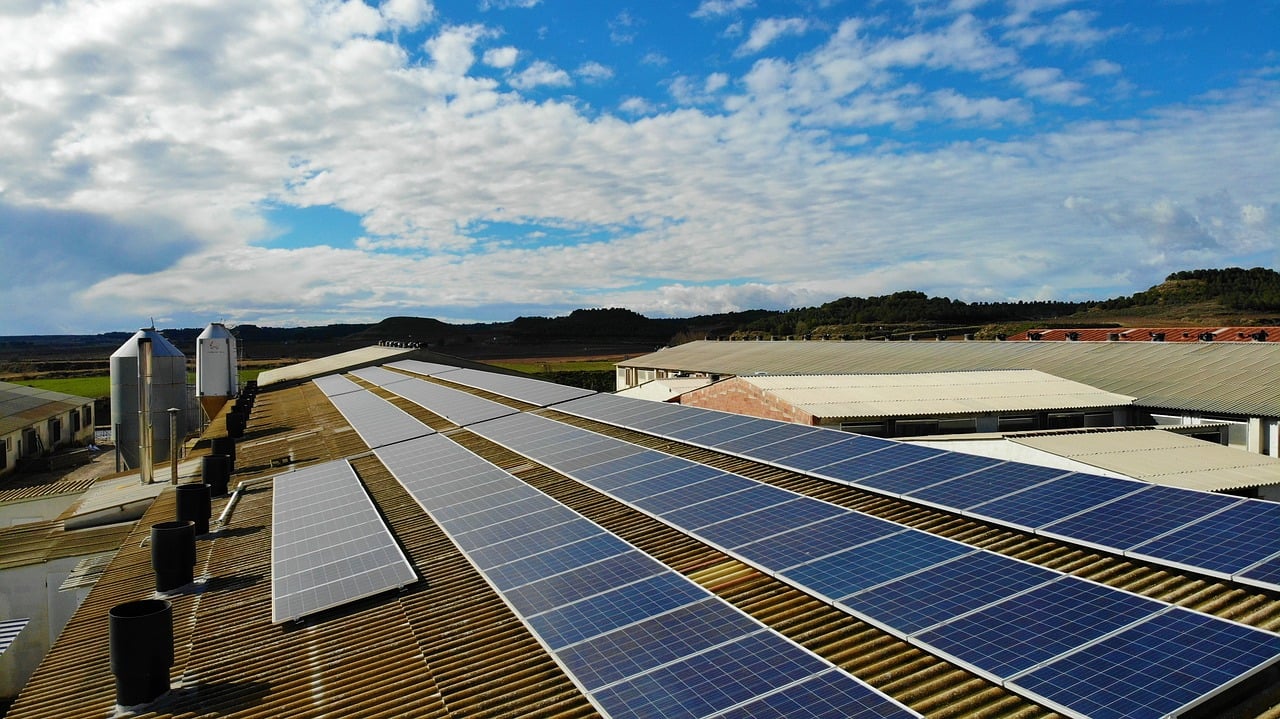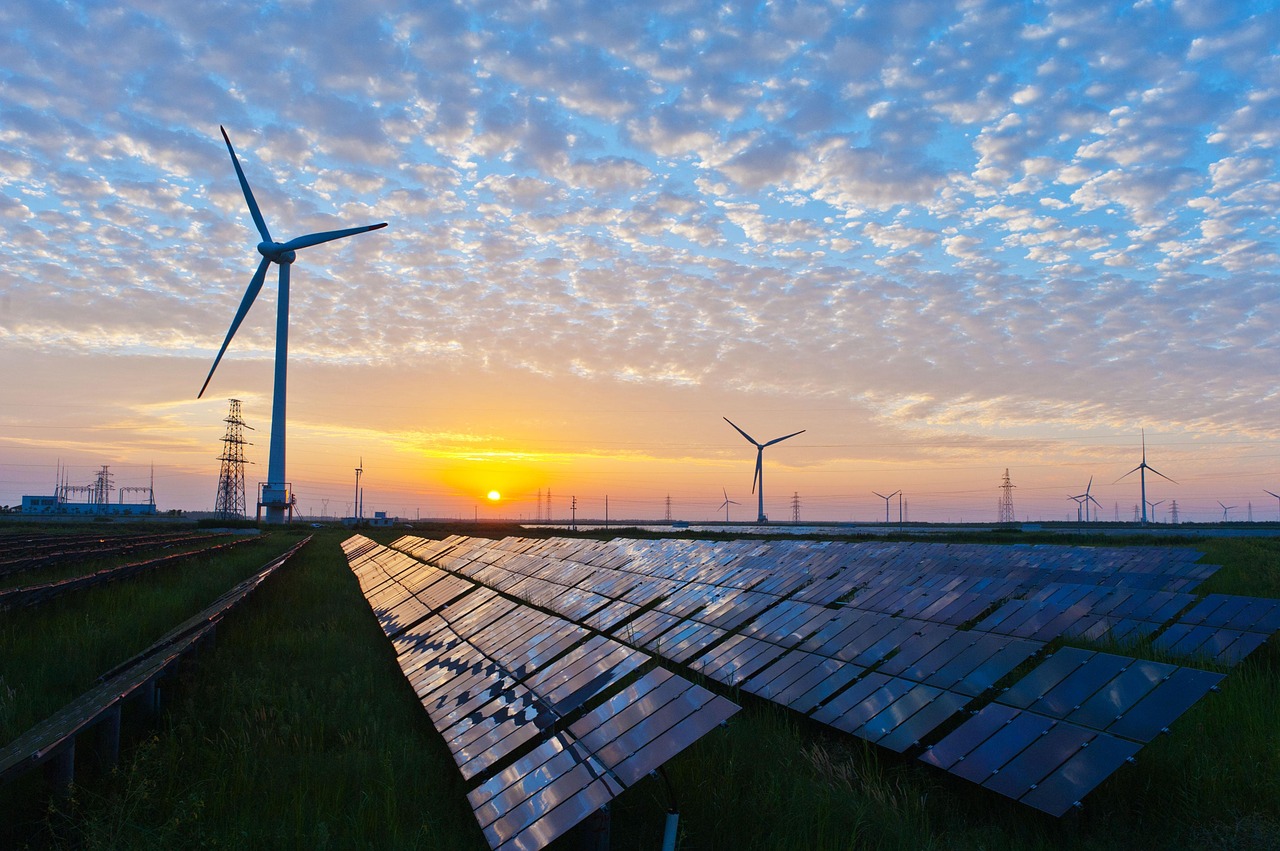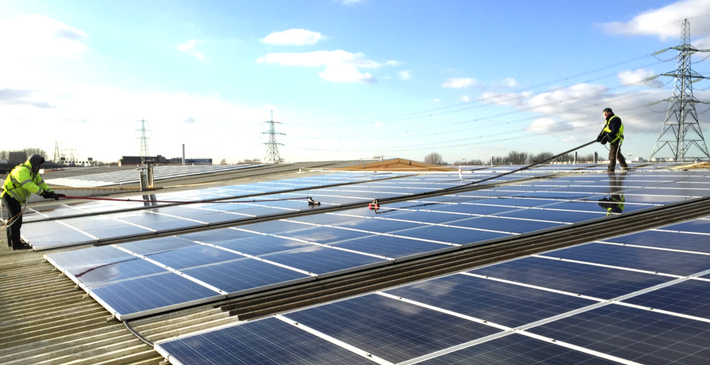
For solar cells, the efficiency of energy conversion is defined as the percentage of incident solar power that gets converted into electrical output power. Specifically:
Efficiency (%) = Electrical output power (W) / Incident solar power (W)
Solar panel efficiency is measured at Standard Test Conditions (STC), using set temperature, irradiance and spectral distribution - this is called the IEC standard 61215. The STC are a temperature of 25°C, 1000 W/m2 irradiance and 1.5 AM spectral distribution. These are equivalent to a light hitting a panel at 37 degrees on a sunny day.
Under the same conditions, a panel with a higher efficiency will produce more electrical power than one with a lower efficiency.
Most polycrystalline panels on the market have an efficiency between 14 and 19%. Monocrystalline panels have a higher efficiency of up to 25%. On a datasheet you can find a particular panel's efficiency, alongside other specifications.
How does solar power compare to other energy sources? Let’s look at the efficiency of a range of energy resources - how well they convert their fuel input into useful energy output. Note that these are the practical efficiencies as seen in commercial solar panels, coal plants etc.
|
Energy source |
Maximum efficiency (approximate) |
|
Coal |
40% |
|
Geothermal |
35% |
|
Hydropower |
90% |
|
Natural gas |
50% |
|
Nuclear |
45% |
|
Solar |
25% |
|
Wind |
55% |
Other factors to note include the power lost in transmission - this can be around 7% for energy from a power plant, whereas solar is often generated and used on site (unless installed at utility scale). When comparing to non-renewables, you have to consider the cost too - sunlight is free, whereas you’d pay for all the fossil fuel you put in, even when most is wasted as heat. And of course you also have to consider the timescale over which the energy source is renewed: daily, in the case of solar or wind vs millions of years, in the case of oil. Researchers are constantly finding new ways to improve solar’s efficiency too.

As we’ve seen, efficiency is the measure of output power relative to the level (and incident angle) of the incoming solar radiation. So while the output of a solar panel does change during the day and seasons, the efficiency of the panel relative to its maximum will fluctuate. Peak generation is during the middle of the day (11am-4pm). In summer panels can produce twice as much power than in winter and cloud cover can reduce generation by 50%.
For more information on the output variations due to weather and seasons, see our guide on Solar Pros and Cons.
Placement - the angle and orientation - is crucial to maximising the available efficiency of your solar array. The best angle for solar panels in the UK is 35-40 degrees to the horizontal, facing directly south. At the same angle facing east, you’d lose 20% of the relative output. For a full comparison, see our angles and orientations blog post.
Shading will also diminish efficiency. This can be from nearby trees, chimney stacks, neighbouring buildings or even the system’s racking. Up to 40% of output could be lost due to even partial shading, because of they way a standard system uses solar panels in a string (so total output is limited by the worst-performing panel within the array). Using an inverter like SolarEdge, which optimises the power output of each individual panel, can reduce the impact of such shading and increase output by up to 25%.
Working out the optimum placement doesn’t have to be a chore. When we design a system, we optimise it for the best possible output on your roof and model potential shading. Get in touch to find out more.
Just as shade can harm a solar system’s efficiency, so can temporary shading in the form of dirt, bird droppings or snow. The good thing is, most of this will be cleaned off naturally by rainwater, especially on a pitched roof.
To ensure there’s not a build up of dirt, we do recommend a clean every couple of years, particularly for flat roof installations. We can provide this service for you.

Due to the natural degradation of the materials that make up a solar cell, the panel efficiency will decrease by about 2% in the first year and 0.5% each year thereafter. Note that this is a decrease as a percentage of the absolute efficiency percentage, not percentage points - so a 17% efficient panel might degrade to 16.9% efficiency after one year.
The rate of degradation varies depending on the quality and manufacture of the panel, and as of 2024, most panels on the market have significantly lower degradation rates than those produced in the 2010's. Most manufacturers give a guarantee that the panel will still perform with at least 85% of its original efficiency after 25 years. Choosing a panel with lower degradation rates is a key consideration when buying solar, second only to the base efficiency rates.
The gradual degradation is due to tiny cracks forming in the cell’s silicon and deterioration of electrical connections. Causes of this includes thermal cycling (materials expanding and contracting as temperatures change throughout the days), dynamic mechanical load (flexing in the wind), humidity, UV damage and water freezing inside the joints or seals.
The so-called 'limit efficiency' of a silicon solar operating at one-sun is well established at approximately 29%. In fact in R Swanson, of SunPower Corp, wrote a paper predicting a more practical limit of 26%.
The best efficiency for a monocrystalline silicon solar cell is 25%, close to the 'practical limit' of around 26%.
1. Band gap losses
Light can be separated into different wavelengths with photons possessing a wide range of energies. Some of the photons don't have enough energy to alter an electron-hole pair. Some of the photons have too much energy. Only a certain amount of energy, measured in electron volts (eV) and defined by the cell material (about 1.1 eV for crystalline silicon), is required to knock an electron loose. This is known as the band gap energy of the material. If a photon has more energy than the required amount, then the extra energy is lost (unless there is sufficient energy to create two electron-hole pairs). These two effects account for the loss of about 70% percent of the radiation energy incident on the silicon solar cell.
If a lower band gap is used, the cell will produce more current (fewer photons lost), but the cell voltage is lowered, which leads to a loss in power. A balance has to be struck: the optimal band gap, balancing these two effects, is around 1.4 eV for a cell made from a single material.
2. Metallic contact grid
The electrons have to flow from one side of the cell to the other through an external circuit. The back of the cell can be covered with a metal, to allow for good conduction, but the top needs to be kept as clear as possible because photons can't get through an opaque conductor. The circuit could be run at the sides of the cells, but the electrons would have to travel too far to reach the contacts. The internal resistance of silicon is quite high and losses would therefore be high.
To minimise the losses, cells are typically covered by a metallic contact grid, made using silver paste as in the standard cell structure. It has to be thick enough to minimise resistance and shorten the distance that electrons have to travel, while still minimising coverage of the cell surface. Inevitably, some photons are blocked by the grid.
Aside from the practical measures we’ve mentioned such as good placement and cleaning, what else can be done to increase solar’s efficiency? Manufacturers are always innovating with new technologies and processes to achieve just that, by some of these methods:
Read more about these in our guide to high efficiency solar panels.
Are black solar panels more efficient? Panels that use the darker monocrystalline cells are more efficient, but black backing may actually harm the efficiency compared to an equivalent panel with white backing. Learn more in our black solar panel blog post.

There are three main types of solar panel: polycrystalline (cheaper blueish cells made of multiple silicon crystals), monocrystalline (more expensive darker cells made of single silicon pieces) and thin film (cheap flexible layers of silicon).
Then we have those made with a bifacial, PERC or back contact structure. Here’s a comparison of the average efficiencies for each type:
|
Type of Cell |
Panel Efficiency |
Output: Watts/ m2 |
Comments |
|
Polycrystalline |
15%-17% |
168W |
Most commonly used type of cell, offering reasonable efficiency at the lowest cost. |
|
Monocrystalline (PERC) |
16%-20% |
195W |
Around 15% more output per square metre than polycrystalline cells. Typically increases cost of installation by 10% relative to polycrystalline, so likely to make economic sense. |
|
Monocrystalline (PERC) bifacial |
16%-20% plus up to 30% uplift |
190W plus uplift |
As for Monocrystalline (PERC) standard panels, but these panels have the potential to generate additional electricity (up to 30% more) from the back face of the panel. This obviously depends on radiation hitting the back face of the panel (e.g. by reflection). |
|
Monocrystalline back contact |
up to 23% |
226W |
Sunpower panels use patented MaxeonTM back contact technology which offers the best performance on the market. See above for more information. |
|
Thin Film / Amorphous |
12-14% |
138W |
Low efficiency requires large surface area. Made from flexible material and so can be used on curved building surfaces. Works better in diffuse light than mono & polycrystalline. |
For a comparison of the most efficient brands on the market, see our guide to the best solar panels. This will also give you some pointers as to the other considerations - besides efficiency - when weighing up which panels to choose.
To see how to achieve the most efficient system on your property, get in touch with us today.
Copyright © Spirit Energy 2026 · info@spiritenergy.co.uk · 0118 951 4490
Jobs and Careers
Interested in joining the Spirit team? Email jobs@spiritenergy.co.uk
Spirit House, 25 Albury Close, Reading, RG30 1BD
(Location formerly known as 44 Portman Road, Reading, RG30 1EA)
Spirit Energy is the trading name of Spirit Solar Ltd · UK Company Number 07138647
Although care is taken to ensure that the information on our website (www.spiritenergy.co.uk) and any guides, calculators or checklists provided by us, electronically or otherwise, are accurate and up-to-date, we cannot accept any responsibility for mistakes or omissions. We enter into no express or implied conditions, warranties, terms or representations regarding the quality, accuracy or completeness of the information. We exclude to the extent lawfully permitted all liability for loss or damage, whether direct, indirect or consequential arising out of your use of our website or any guides, calculators or checklists provided by us, or from any information or omission contained in our website or any guides, calculators or checklists provided by us.